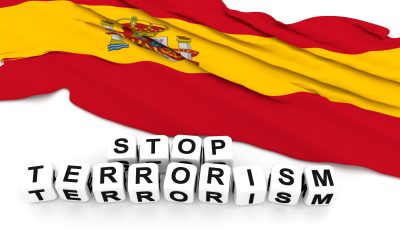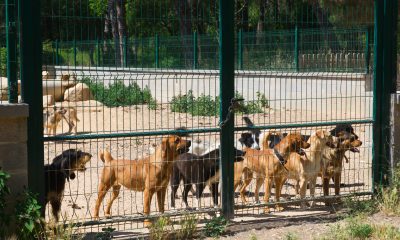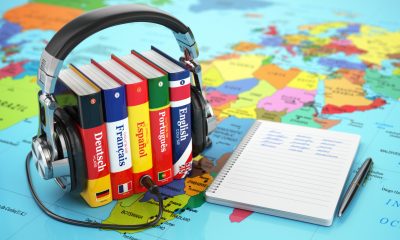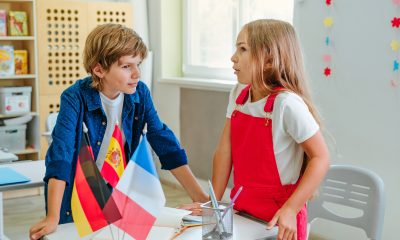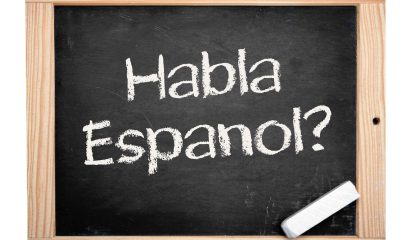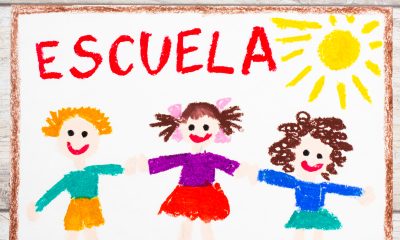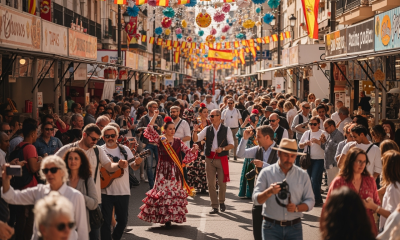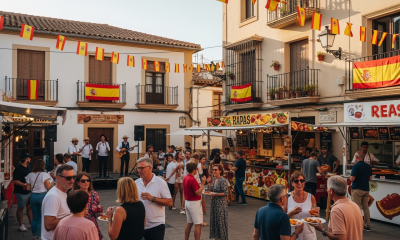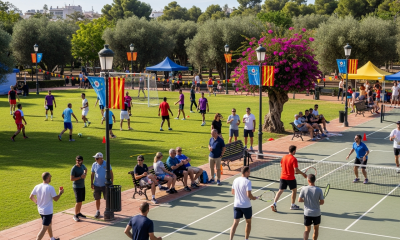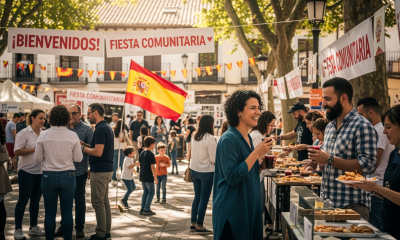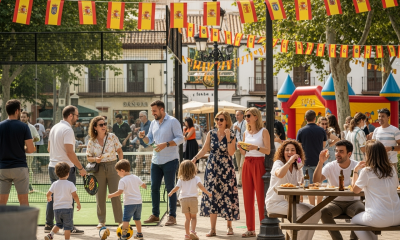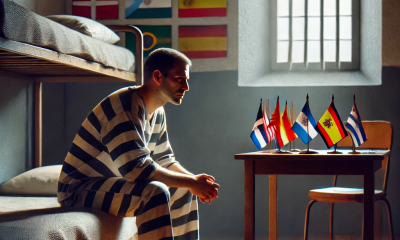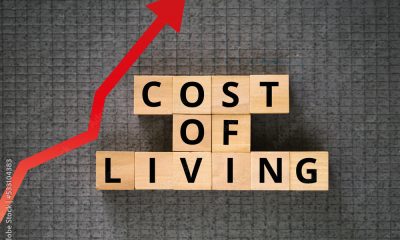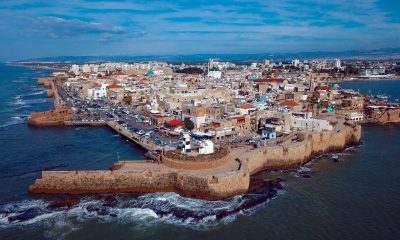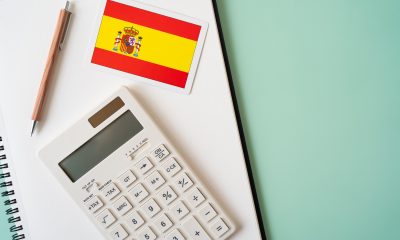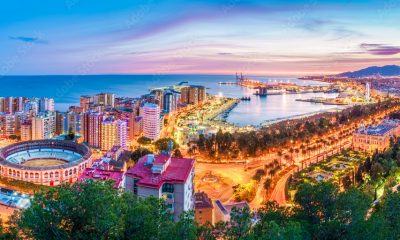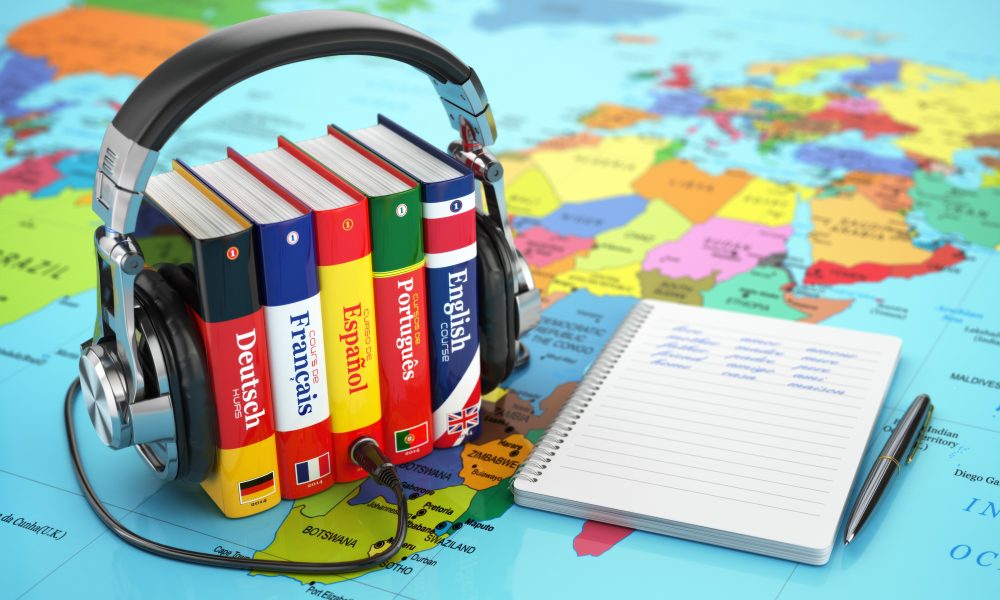Education & Language
Language Schools in Spain: A Gateway to Fluent Spanish

Spain has long been a popular destination for language learners around the world.
Its rich cultural heritage, beautiful landscapes, and warm Mediterranean climate make it an attractive choice for anyone looking to immerse themselves in the Spanish language.
For those seeking to learn Spanish, Spain offers a wide range of language schools, catering to all levels, budgets, and preferences.
Whether you’re looking to master Spanish for work, travel, or personal growth, enrolling in a language school in Spain provides a unique opportunity to learn the language in its natural environment.
In this article, we will explore the benefits of studying Spanish in Spain, the types of language schools available, and some top cities to consider for your language learning journey.
Why Learn Spanish in Spain?
Spanish, or castellano, is the second most spoken language in the world, with over 460 million native speakers.
Learning Spanish in Spain allows students to be immersed in the language and culture, making it easier to practice in real-world settings.
Here are a few reasons why studying Spanish in Spain is an attractive option:
- Language Immersion: Spain is home to various dialects of Spanish, and studying in a local school gives you the chance to hear and practice the language in its regional variations.
The immersion experience ensures that you not only learn vocabulary and grammar but also the nuances of how the language is used in everyday situations. - Cultural Exposure: Beyond language, studying in Spain provides an opportunity to explore the country’s rich history, traditions, and lifestyle.
From flamenco dancing to tapas eating and historic landmarks to modern art, there is much to discover while enhancing your language skills. - Quality Education: Spain is home to a large number of accredited language schools that follow international standards and employ experienced teachers.
Whether you are a complete beginner or an advanced student, these schools provide tailored programs to help you meet your language goals. - Access to Spanish-Speaking Communities: Studying in Spain allows you to practice Spanish outside the classroom by interacting with locals, which accelerates your learning.
Many students find that their progress is greatly enhanced by using Spanish in daily life, whether it’s ordering food, chatting with locals, or asking for directions.
Types of Language Schools in Spain
Spain offers a diverse range of language schools, catering to different needs and preferences.
Here are some common types of language programs:
- Intensive Language Courses: For students looking to learn Spanish quickly, many schools offer intensive courses that focus on rapid improvement.
These programs often involve several hours of class per day, combined with interactive activities and practice sessions. - Standard Language Courses: These are less intensive programs, typically offering 15-20 hours of lessons per week.
They are ideal for students who want to balance their language studies with sightseeing and exploring Spain. - Private Lessons: Some students prefer one-on-one lessons tailored to their specific needs.
Private tutoring can be ideal for focusing on particular areas of difficulty, such as pronunciation or business Spanish, and for those who want a more flexible schedule. - DELE Preparation Courses: The Diplomas de Español como Lengua Extranjera (DELE) is an official certification of Spanish proficiency.
Many language schools in Spain offer specialized courses to prepare students for the DELE exams, which are recognized worldwide. - Cultural Programs and Workshops: Many language schools in Spain offer cultural workshops as part of their programs.
These may include cooking classes, wine-tasting sessions, dance lessons (such as flamenco), or excursions to nearby historical sites,
giving students a deeper connection to Spanish culture. - Summer Camps for Teenagers: For younger learners, many schools offer summer language camps where teens can study Spanish in a fun and relaxed environment.
These camps often combine language lessons with outdoor activities, games, and trips.
Best Cities to Learn Spanish in Spain
Spain boasts numerous cities that are ideal for learning Spanish, each with its own unique atmosphere and charm.
Here are a few top cities to consider:
- Madrid: As the capital of Spain, Madrid is a vibrant, cosmopolitan city with a thriving cultural scene.
It’s an excellent choice for students who want to experience both modern and traditional Spain. Madrid has a large number of language schools and offers a variety of cultural activities,
from visiting the Prado Museum to enjoying tapas in lively squares. - Barcelona: Barcelona is famous for its unique architecture, beaches, and Catalan culture.
While the primary language is Spanish, many locals also speak Catalan,giving students an interesting linguistic mix.
Barcelona is a popular destination for young travelers and students, making it a dynamic and exciting city for language learning. - Seville: Located in the heart of Andalusia, Seville is a great place to experience the charm of southern Spain.
Known for its flamenco dancing, historical landmarks, and relaxed pace of life, Seville provides a welcoming atmosphere for language learners.
The Andalusian accent may be distinct, but it’s a great place to practice real-world Spanish. - Valencia: Valencia is a beautiful coastal city known for its futuristic architecture, delicious paella, and lively festivals.
With fewer tourists than Madrid and Barcelona, Valencia offers a more authentic experience for students looking to immerse themselves in local culture and language. - Granada: Famous for the Alhambra and its stunning views of the Sierra Nevada mountains, Granada is another excellent city for learning Spanish.
The city is smaller and more relaxed compared to larger cities, making it a peaceful place to focus on language acquisition. - Malaga: Situated on the Costa del Sol, Malaga offers a perfect blend of beach life and language learning.
The city is home to many international students and offers a variety of activities that allow you to practice Spanish while enjoying the Mediterranean lifestyle.
Choosing the Right Language School
When selecting a language school in Spain, there are a few factors to consider:
- Accreditation: Look for schools that are accredited by official organizations, such as the Instituto Cervantes or the European Language Council.
These schools adhere to high educational standards and provide internationally recognized certifications. - Reviews and Recommendations: Read reviews and testimonials from previous students to gauge the quality of the school and the effectiveness of its teaching methods.
- Course Offerings: Make sure the school offers a course that fits your needs, whether you’re looking for an intensive program, private lessons, or preparation for the DELE exams.
- Location: Choose a city that aligns with your interests, lifestyle, and goals. Consider whether you prefer a bustling urban center or a quieter, more relaxed town.
- Cultural Activities: Check if the school offers extracurricular activities, as these can enhance your experience and provide more opportunities to practice your Spanish
in real-life situations.
Conclusion
Learning Spanish in Spain is an exciting and rewarding experience.
With a wide variety of language schools and cities to choose from, it’s easy to find a program that suits your needs and goals.
Whether you’re seeking an intensive course to boost your fluency or a more relaxed environment to learn at your own pace,
studying Spanish in Spain offers a unique blend of language learning and cultural immersion that is hard to beat.
By choosing the right language school and city, you can take full advantage of your time in Spain, ensuring that your language skills improve quickly while you
enjoy everything this beautiful country has to offer.
Education & Language
Private Schools in Spain Compared to Public Schools
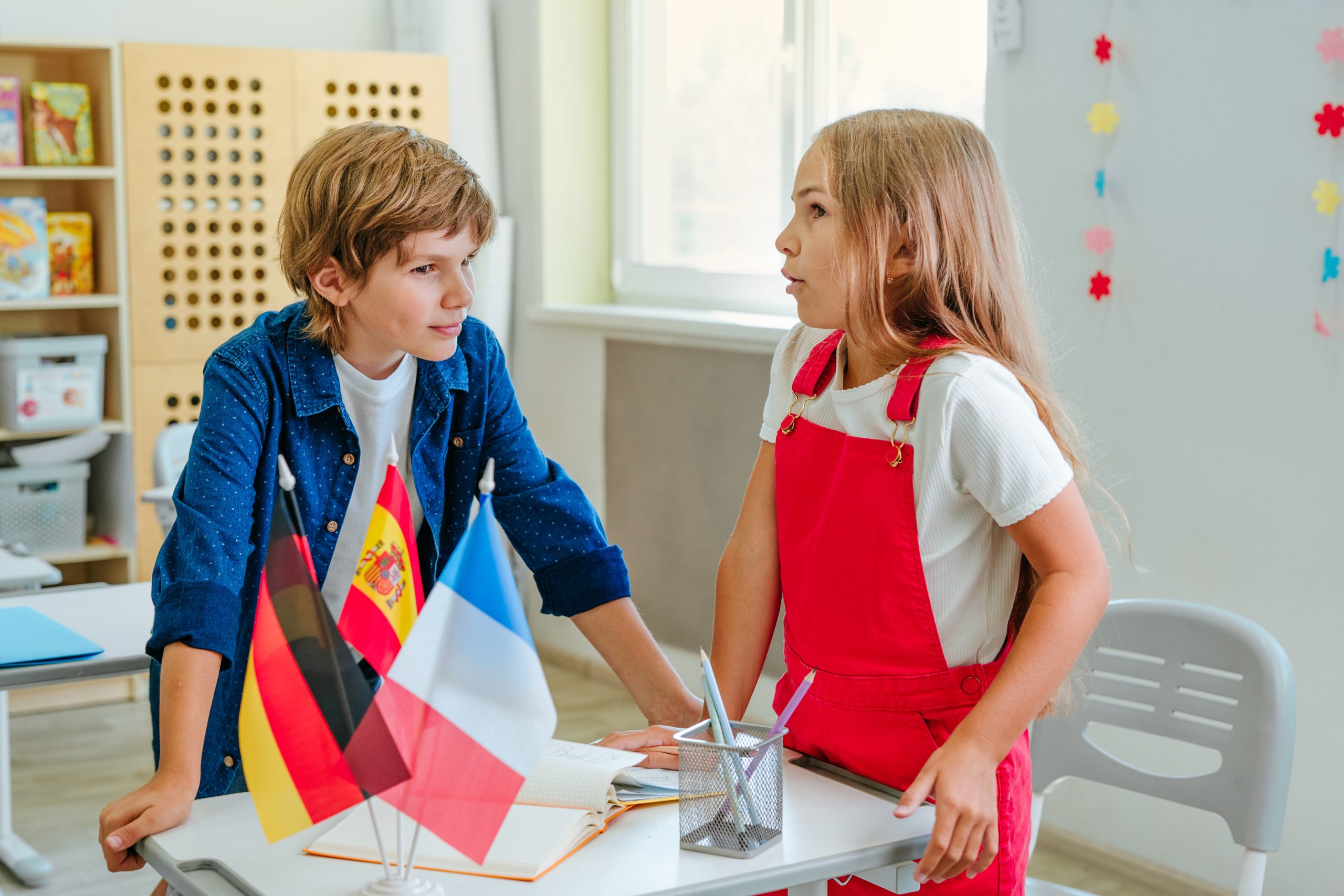
Introduction
In Spain, the education system is divided into public and private institutions, each with its own set of advantages.
While public schools are state-funded and provide free education to all students, private schools, which include both independent and semi-private (concertado) institutions,
offer an alternative that many parents consider due to the perceived benefits in terms of quality, resources, and specialized programs.
This article will explore the benefits of private schools in Spain compared to public schools, helping parents make informed decisions about their children’s education.
Quality of Education
One of the primary reasons parents choose private schools over public ones in Spain is the perceived higher quality of education.
Private schools often have more resources to invest in advanced educational materials, smaller class sizes, and modern facilities.
These factors can contribute to a more personalized learning experience and better academic outcomes.
Private schools typically offer a more rigorous academic curriculum and a broader range of extracurricular activities, including sports, arts, and language programs.
This holistic approach to education helps in developing well-rounded individuals.
Teacher-Student Ratio
Private schools generally have a lower teacher-student ratio compared to public schools.
This allows for more individualized attention and tailored instruction to meet each student’s unique needs.
Smaller class sizes enable teachers to focus on student development, address learning difficulties more effectively, and foster a more interactive and engaging classroom environment.
Specialized Programs and Bilingual Education
Many private schools in Spain offer specialized programs that cater to specific educational philosophies or pedagogical approaches, such as Montessori,
International Baccalaureate (IB), or British and American curricula.
These programs can provide students with unique learning opportunities and prepare them for higher education and global careers.
Bilingual and trilingual education is another significant advantage of private schools.
Many private institutions offer extensive language programs that start from an early age, promoting proficiency in Spanish, English, and often a third language such as French or German.
This linguistic edge can be crucial in today’s globalized world.
Extracurricular Activities and Facilities
Private schools often provide a wide range of extracurricular activities that help in the holistic development of students.
These activities can include sports, music, drama, art, and various clubs. Access to state-of-the-art facilities, such as swimming pools, sports fields, laboratories, and libraries,
enhances the overall educational experience and encourages students to explore their interests and talents.
Parental Involvement and Community
Private schools typically encourage greater parental involvement in the education process.
They often have active parent-teacher associations and regular communication between parents and teachers.
This collaboration can lead to a more supportive and cohesive educational environment for students.
The sense of community in private schools is often stronger, with more opportunities for families to engage in school events and activities.
This community spirit can enhance the educational experience and create a supportive network for students and parents alike.
Diciplinse and School Culture
Private schools often have stricter discipline policies and a more structured environment compared to public schools.
This can lead to a more focused and orderly learning atmosphere, which some parents believe is conducive to better academic performance and personal development.
The school culture in private institutions can also be more aligned with specific values and educational philosophies that parents deem important.
This alignment can provide a consistent environment that reinforces the values and principles taught at home.
Conclusion
While public schools in Spain provide a solid and accessible education to all students, private schools offer distinct advantages that can make them an attractive option for many families.
The benefits of private schools, including higher quality of education, smaller class sizes, specialized programs, extensive extracurricular activities, and greater parental involvement,
can contribute to a more personalized and enriched educational experience.
Choosing the right type of school is a significant decision, and parents should consider their child’s needs, family values, and long-term educational goals when making this choice.
Both public and private schools have their unique strengths, and understanding these can help parents make the best decision for their children’s future.
FAQ
Cultural
The Spanish Language
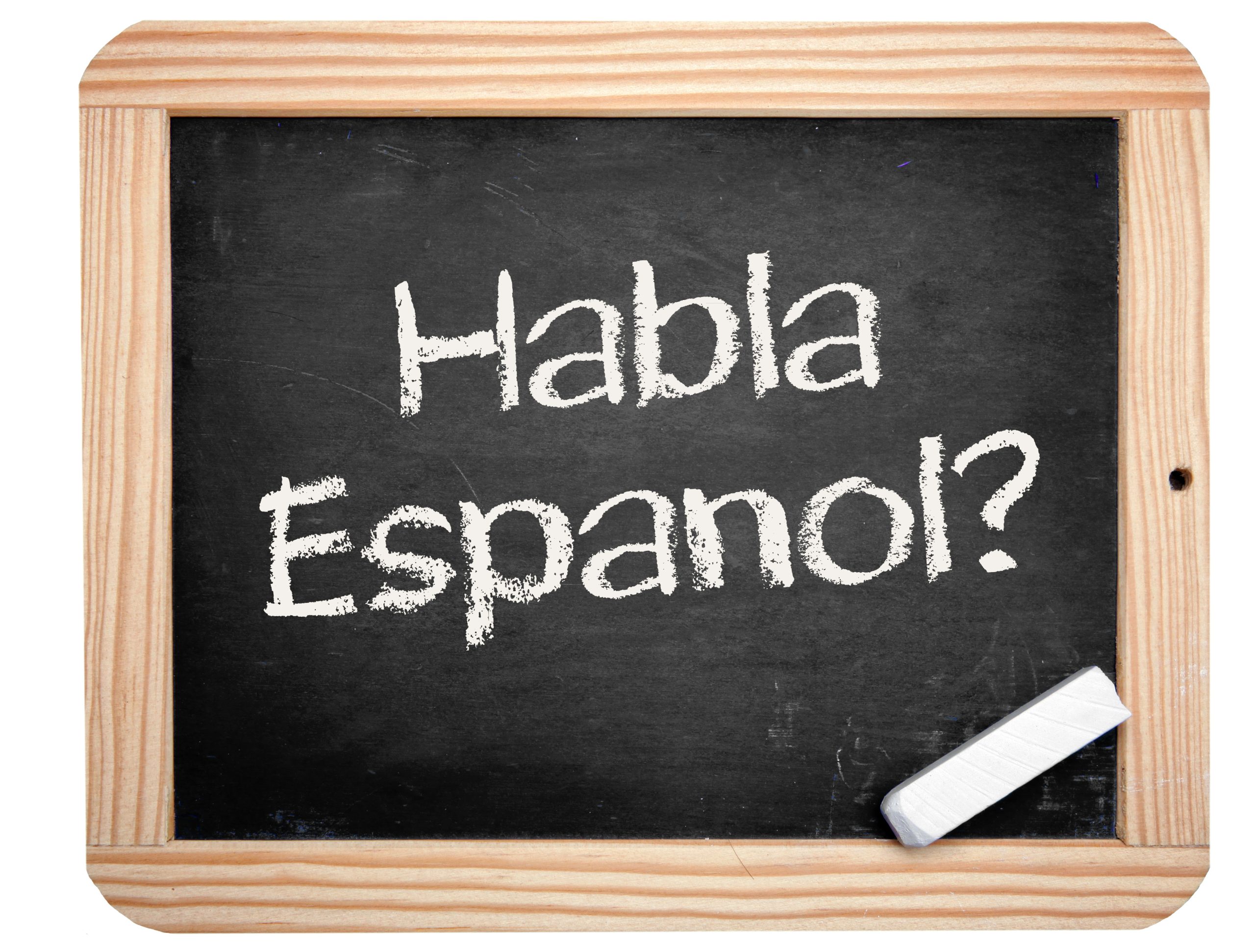
A Rich Tapestry of History and Influence
Introduction
Spanish, or Español, is a Romance language that originated in the Iberian Peninsula and has grown to become one of the most widely spoken languages in the world.
With over 460 million native speakers, Spanish ranks as the second most spoken language globally by native speakers and the fourth most spoken language in total.
Its influence spans continents and cultures, making it a critical language for global communication, culture, and trade.
Historical Background
The roots of the Spanish language trace back to the Vulgar Latin spoken by the Romans who colonized the Iberian Peninsula starting in the 3rd century BC.
Over time, this Vulgar Latin evolved, influenced by various languages and cultures, including the Visigoths and Moors.
The Reconquista, a series of campaigns by Christian states to recapture territory from the Moors, further shaped the linguistic landscape,
leading to the development of Old Spanish.
In the late 15th century, the Catholic Monarchs Ferdinand and Isabella unified Spain and initiated the standardization of the Spanish language.
The publication of “Gramática de la lengua castellana” by Antonio de Nebrija in 1492 marked the first grammar of a modern European language and set the
foundation for the Spanish we know today.
Geographical Spread and Variants
The spread of Spanish globally is closely tied to the Spanish Empire’s expansion from the 15th to the 19th centuries.
Spanish explorers and conquistadors brought the language to the Americas, Africa, and Asia, establishing it as a dominant language in these regions.
Today, Spanish is the official language of 20 countries, predominantly in Latin America, and is widely spoken in the United States, the Philippines, and parts of Africa.
The United States alone has over 41 million native Spanish speakers, making it the second largest Spanish-speaking country after Mexico.
Dialects and Regional Variations
While Spanish is relatively uniform compared to other languages, it does have notable dialectal differences.
These variations can be seen in pronunciation, vocabulary, and even grammar.
For example:
- Castilian Spanish:
Considered the standard form, it is spoken in northern and central Spain.
It is characterized by the use of the “theta” sound for the letters “z” and “c” before “e” or “i” (e.g., “cinco” pronounced as “thinco”). - Andalusian Spanish:
Spoken in southern Spain, it often features the dropping of the final “s” and the aspiration of the “j” sound. - Latin American Spanish:
This broad category includes numerous regional dialects. For example, Caribbean Spanish tends to omit certain consonants,
while Rioplatense Spanish, spoken in Argentina and Uruguay, uses “vos” instead of “tú” for the familiar second person.
Cultural Influence and Importance
The Spanish language has a profound cultural impact, with significant contributions to literature, music, film, and art.
The works of literary giants like Miguel de Cervantes, Gabriel García Márquez, and Pablo Neruda have garnered international acclaim.
Spanish-language music, from traditional flamenco to modern reggaeton, has a global audience.
In addition to its cultural significance, Spanish is crucial in international diplomacy, business, and communication.
It is one of the six official languages of the United Nations and is used in many international organizations and conferences.
Learning Spanish
Learning Spanish offers numerous benefits, both cognitive and practical.
It opens doors to understanding diverse cultures and enhances career opportunities in various fields, including education, healthcare, and international business.
Many educational institutions worldwide offer Spanish as a foreign language, and numerous online resources are available for self-study.
Conclusion
The Spanish language is a dynamic and evolving medium of communication with deep historical roots and wide-reaching influence.
Its ability to connect people across continents and cultures underscores its importance in our globalized world.
Whether for personal, academic, or professional reasons, learning Spanish can be a rewarding endeavor that enriches one’s understanding of the world.
References
- “The Spanish Language.” Instituto Cervantes. [Link]
- Lipski, John M. “A History of Afro-Hispanic Language: Five Centuries, Five Continents.” Cambridge University Press, 2005.
- Penny, Ralph. “A History of the Spanish Language.” Cambridge University Press, 2002.
Education & Language
Kindergartens in Spain
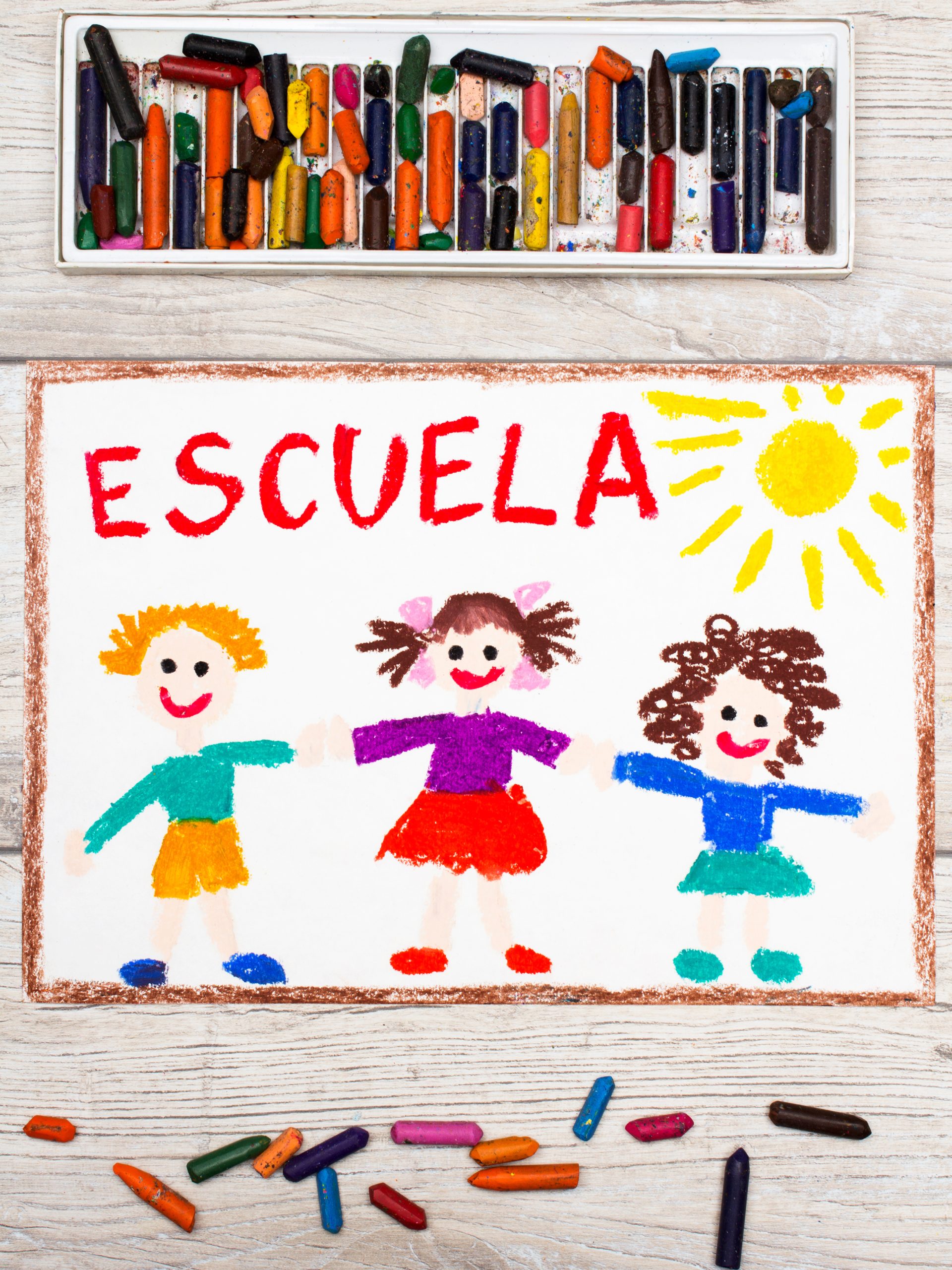
An Insight into Early Childhood Education
Early childhood education is a critical foundation for lifelong learning and development.
In Spain, kindergartens, known as “educación infantil,” play a vital role in nurturing young minds and preparing them for primary education.
This article explores the structure, curriculum, and cultural aspects of kindergartens in Spain, highlighting the importance placed on early education by Spanish society.
Structure of Early Childhood Education
- Age Groups:
- Educación infantil is divided into two cycles:
- First Cycle: For children aged 0 to 3 years, often referred to as “guarderías” or nurseries.
- Second Cycle: For children aged 3 to 6 years, which is more structured and is part of the formal education system.
- Educación infantil is divided into two cycles:
Types of Kindergartens:
- Public Kindergartens:
Funded by the government and usually free or low-cost for residents.
These are often attached to public primary schools. - Private Kindergartens:
Independently funded and may offer specialized programs, such as bilingual education or Montessori methods.
They generally charge higher fees. - Concertados:
Semi-private institutions that receive partial funding from the government but may also charge fees.
Enrollment:
- Enrollment in the second cycle of educación infantil (ages 3 to 6) is not compulsory but is highly encouraged.
The vast majority of children in Spain attend this cycle, reflecting the value placed on early education.
Curriculum and Educational Approach
- Holistic Development:
- The curriculum in Spanish kindergartens focuses on holistic development, encompassing cognitive, social, emotional, and physical growth.
Activities are designed to promote creativity, critical thinking, and problem-solving skills.
- The curriculum in Spanish kindergartens focuses on holistic development, encompassing cognitive, social, emotional, and physical growth.
- lay-Based Learning:
- Play is central to the educational approach in Spanish kindergartens. Children engage in various activities, such as arts and crafts, music, storytelling,
and outdoor play, which foster learning in a natural and enjoyable manner.
- Play is central to the educational approach in Spanish kindergartens. Children engage in various activities, such as arts and crafts, music, storytelling,
- Language Development:
- Language development is a key focus, with many kindergartens offering bilingual education (Spanish and a regional language like Catalan, Basque, or Galician).
Some private institutions also provide English immersion programs.
- Language development is a key focus, with many kindergartens offering bilingual education (Spanish and a regional language like Catalan, Basque, or Galician).
- Social Skills and Values:
- Emphasis is placed on developing social skills, cooperation, and empathy.
Children are encouraged to interact with peers, share, and work together on group activities.
- Emphasis is placed on developing social skills, cooperation, and empathy.
- Parental Involvement:
- Parental involvement is highly valued in Spanish kindergartens.
Schools often organize workshops, meetings, and activities that involve parents in their children’s education.
- Parental involvement is highly valued in Spanish kindergartens.
Daily Routine and Environment
- Daily Schedule:
- A typical day in a Spanish kindergarten includes a mix of structured activities and free play.
The day usually starts with a morning assembly or circle time, followed by lessons and activities.
There is also time for meals, naps, and outdoor play.
- A typical day in a Spanish kindergarten includes a mix of structured activities and free play.
- Learning Environment:
- The learning environment in Spanish kindergartens is designed to be stimulating and safe.
Classrooms are equipped with age-appropriate educational toys, books, and materials that encourage exploration and discovery.
- The learning environment in Spanish kindergartens is designed to be stimulating and safe.
- Outdoor Activities:
- Outdoor play is an essential part of the daily routine.
Kindergartens often have playgrounds and garden areas where children can engage in physical activities and develop their motor skills.
- Outdoor play is an essential part of the daily routine.
Cultural and Regional Variations
- Regional Languages:
- In regions with distinct languages, such as Catalonia, the Basque Country, and Galicia, kindergartens incorporate regional languages into the curriculum alongside Spanish.
This bilingual approach helps preserve regional identities and promotes linguistic diversity.
- In regions with distinct languages, such as Catalonia, the Basque Country, and Galicia, kindergartens incorporate regional languages into the curriculum alongside Spanish.
- Festivals and Traditions:
- Cultural festivals and traditions are celebrated in kindergartens, providing children with a sense of cultural heritage and community.
Activities related to local festivals, such as making traditional crafts or participating in local dances, are common.
- Cultural festivals and traditions are celebrated in kindergartens, providing children with a sense of cultural heritage and community.
- Nutrition and Meals:
- Nutrition is an important aspect of early childhood education in Spain.
Many kindergartens provide healthy meals and snacks, emphasizing the Mediterranean diet, which includes fresh fruits, vegetables, and whole grains.
- Nutrition is an important aspect of early childhood education in Spain.
Challenges and Improvements
- Access and Availability:
- While the second cycle of educación infantil is widely accessible, availability of spots in public nurseries (first cycle) can be limited, particularly in urban areas.
Efforts are ongoing to expand access and improve facilities.
- While the second cycle of educación infantil is widely accessible, availability of spots in public nurseries (first cycle) can be limited, particularly in urban areas.
- Quality and Standards:
- Ensuring high-quality education across all kindergartens, particularly in private institutions, remains a priority.
The government sets standards and conducts inspections to maintain quality and consistency.
- Ensuring high-quality education across all kindergartens, particularly in private institutions, remains a priority.
- Teacher Training:
- Continuous professional development for early childhood educators is essential.
Initiatives to enhance teacher training and support are crucial for improving educational outcomes.
- Continuous professional development for early childhood educators is essential.













